How to Clean Vintage Clothes

How to Clean Vintage Clothing Safely
If you’re lucky enough to own vintage clothing, you want to do everything you can to take care of your items. They have lasted for years already, and taking steps to preserve their quality and keep them looking their best for many years to come is important. Vintage items certainly require special care, but there is no one set answer for how to clean vintage clothing as the best method can vary based on the clothing’s materials and other factors. We’ll explain the best technique for cleaning different types of vintage clothes in the next few sections to help you protect those special pieces of history you own.
Cleaning Vintage Clothing
Before we discuss how to clean vintage clothing, it is important to begin with when you should wash vintage clothes. To protect the clothing items as much as possible, they typically should not be washed after each wear. While this may go against what you’re used to doing with more current clothing items that you buy online or in stores, washing clothes too often can actually decrease their lifespan.
Now, hear us out. Each time clothing is washed, the fibers degrade little by little. After several washes, it may become more likely for holes to form or seams to separate. If you wear a vintage garment, and it doesn’t get dirty, consider holding off on washing it. Rather than washing the item, either in a washing machine or by hand, let it air out. Try hanging the item outside in the fresh air and sun for a few hours; you’ll be amazed at how this can really freshen an item out. It may take some getting used to, but as you start spacing out how frequently you wash your items, you’ll realize that they are just fine without being washed after each wear.
Of course, even with extending the time between washes, vintage clothing will still need to be washed at some point. You should also wash vintage garments promptly if they get soiled, sweaty, or start to develop an odor; we aren’t advocating re-wearing a stained shirt or something that got a lot of sweat on it after an outdoor gathering.
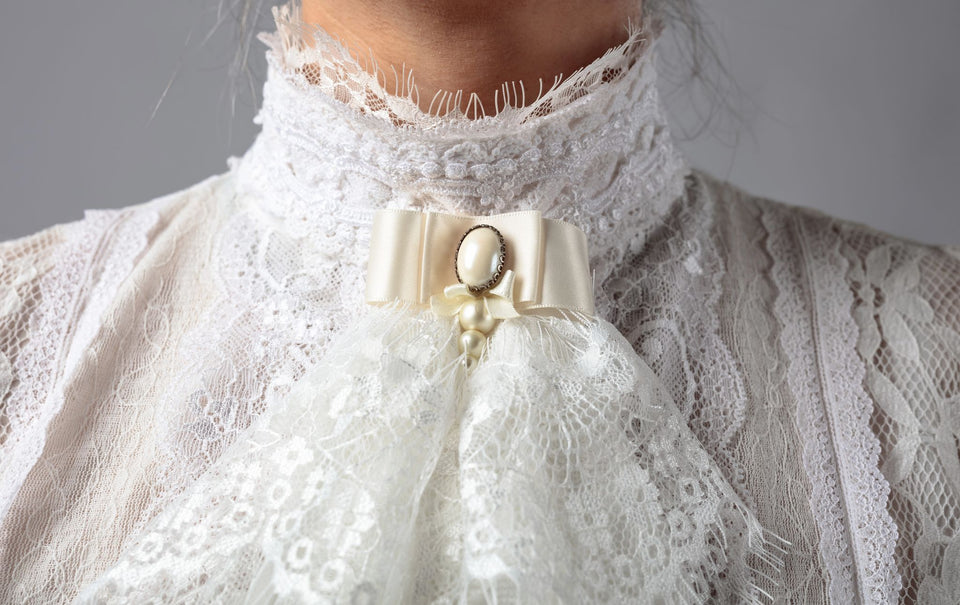
Washing Vintage Clothing in a Washing Machine
Generally speaking, vintage clothing should not be washed in a washing machine. However, there are some exceptions to this rule.
If a vintage clothing item’s label includes machine washing instructions, you can consider using a washing machine to clean it.
However, when washing vintage clothing in a washing machine, always use a delicates cycle, and take care to wash the item separately or with other similarly-colored materials. Also check to ensure any buttons are fastened and zippers are zipped to keep the clothing from getting snagged.
If you are washing a particularly delicate garment, or washing delicate items together, you may like to consider using a mesh laundry bag to protect clothes, which will still enable a thorough machine wash but also protection from snags, pulling and twisting.
While washing machines are a modern convenience that we have come to rely on, you’ll find that most vintage materials will do better with handwashing. However, vintage clothing items made from nylon, cotton, polyester, spandex, or synthetic materials may do fine in the washing machine.
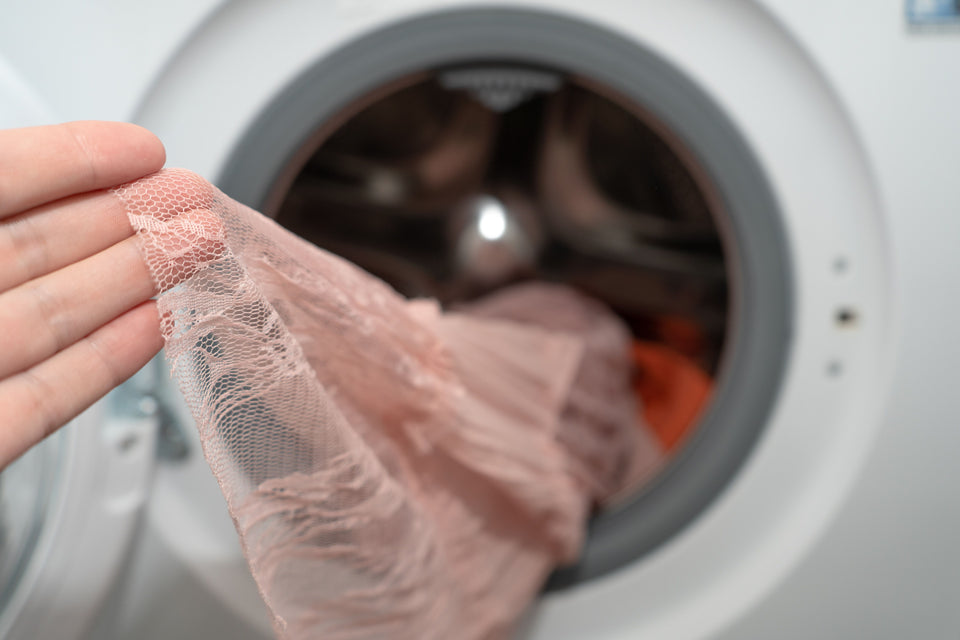
Hand Washing Vintage Clothing
As we shared above, in most cases hand washing vintage clothing is the best choice. A washing machine’s cleaning cycle can be too abrasive for many vintage fabrics and could cause damage. The convenience factor simply isn’t worth the irreparable damage that can happen to your treasured vintage items.
To hand wash your vintage garments, begin with a completely clean basin or tub. If you don’t have a large enough wash basin, you can consider using your bathtub or sink, but thoroughly clean it before starting to wash your clothing item.
Add a little hot water in with a gentle detergent. Use just enough hot water to ensure the detergent dissolves, then switch to either cold or warm water based on the care instructions on the garment.
Once there is enough water in the basin, carefully place one clothing item in and gently move it through the water. Make sure the entire garment gets covered by the water to ensure it all comes out clean. Allow the clothing item to sit in the tub for a few moments. You’ll know it's finished when the water color changes to yellow.
Next, drain the water from the tub or basin and remove the excess water from the clothing item. Take care to do so gently by pressing on it; you should never wring out vintage garments as it could damage them.
Remove the garment from the basin carefully. Resist the urge to grab just one arm or leg as it may stretch out the item!. Then, rinse out the tub, and fill it again with cool water. You should repeat the steps of moving the garment through the water, draining the water, and pressing the excess water out from the garment until you are sure all the soap has been rinsed out. The number of rinses can vary depending on the clothing item you are washing, but it typically takes about two or three rinses to remove all the soap.
If you have multiple garments that need to be hand washed, try to avoid the temptation of saving time by washing them together. The dyes could potentially bleed, or the fabrics could rub against one another too much and damage one of your items. It just isn’t worth the risk of ruining the clothing. Washing just one item at a time is a best practice to stick to when washing vintage clothes.
Some common vintage clothing materials that do best with hand washing include rayon with a plain weave, cotton blends, polyester blends, linens, silk, and clothing items that feature embroidery or other more intricate details.
As with machine washing, before you hand wash a clothing item, make sure that all the zippers and buttons are done up. You should also perform a test to make sure the item won’t shrink when washed. Try putting a little water on a seam that is hidden and look for any signs of puckering. Puckering at the seam indicates that the garment will likely shrink and, thus, should not be submerged under the water.
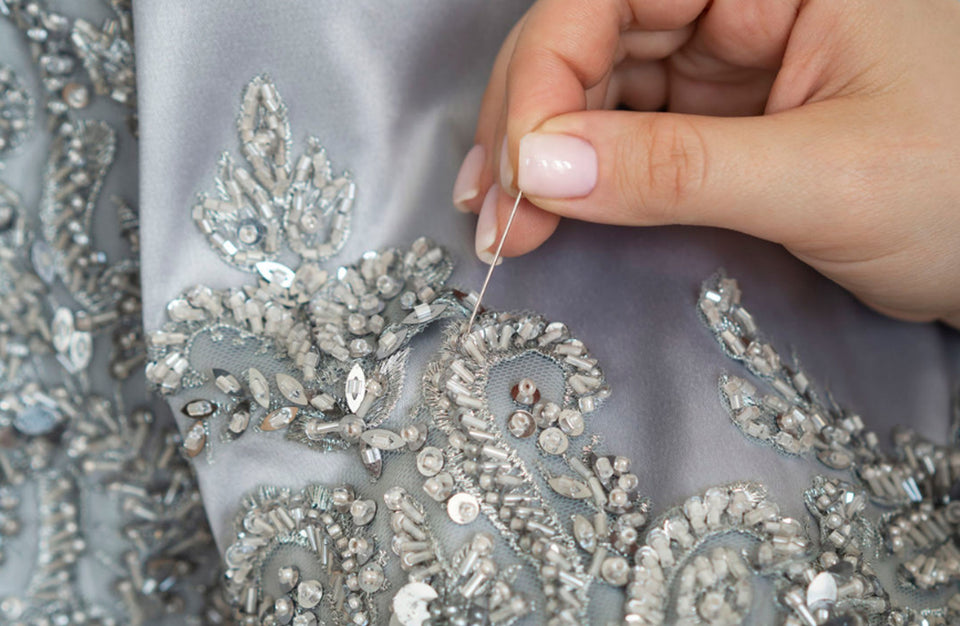
Hang Drying Vintage Clothing
Drying vintage garments properly is just as important as following proper washing procedures! Dry them the wrong way, and your clothing may end up stretched or damaged. Depending on the size and weight of the garment, you may either hang dry it or lay it flat to dry.
When hang drying vintage clothing, a padded hanger will offer the most protection for the item. Plastic hangers may also be used, but try to avoid using a metal hanger. Metal hangers may rust and cause discoloration, and they can also cause the shoulder of shirts or dresses to stretch.
If a clothing item is heavy, laying it flat to dry is the best choice. Otherwise, the weight of the item could pull it down as it is hanging and stretch it out. When laying items flat, take time to carefully reshape, flatten, and smooth them out before they dry. This can help prevent wrinkles or bulges. You’ll be glad you took the extra time to properly dry your items when they look spectacular the next time you put them on!
When To Use a Dry Cleaner
Knowing how to wash vintage clothes properly can help you properly care for many of your treasured garments. However, it is also important to know which of your items are better off being taken to a vintage dry cleaners. Some fabrics will respond better to dry cleaning, and you’ll be able to keep these items looking their best when you choose to dry clean them.
Wool is one fabric that should definitely be dry cleaned. It is very likely to shrink if you try to wash it at home. Other items, such as pleated skirts, jackets with shoulder pads, and leather, will also fare best when dry cleaned. Additionally, if you have any vintage pieces that feature iron-on patches or special trims, you’ll likely want to bring these to the dry cleaners as well.
However, there are some fabrics and vintage items that should not be dry cleaned. Many older silks can be damaged by dry cleaners, and items like fur and leather should be cleaned by professionals that specialize in caring for these materials. If any of your vintage items are decorated with rhinestone buttons or other similar embellishments, try to remove them before bringing the item to the dry cleaners.
For more on what clothes can be dry cleaned, read more on our blog.
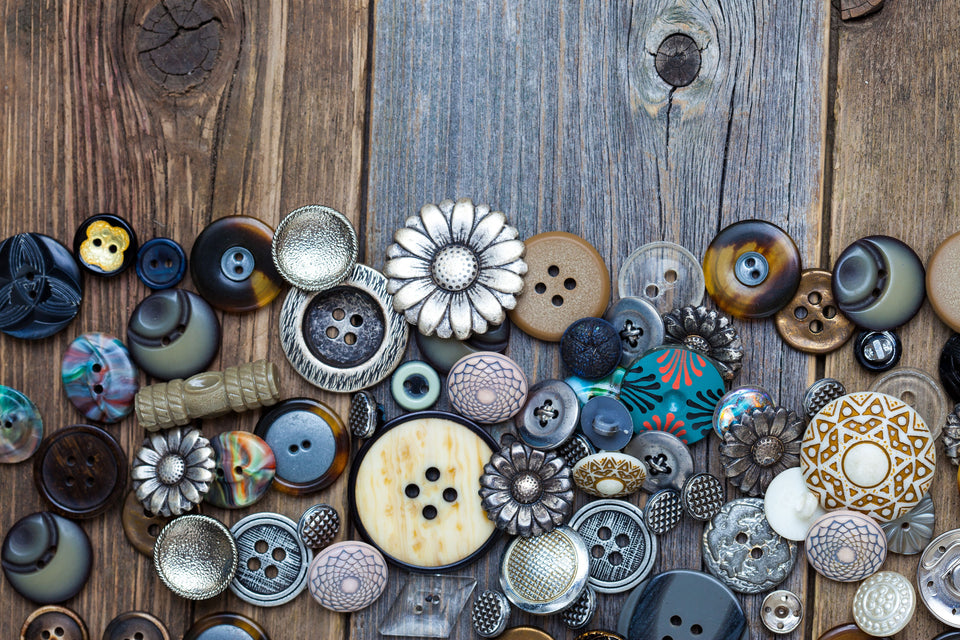
Pressing Vintage Clothes
No one wants to wear a wrinkly skirt or blouse, but if you need to remove wrinkles from vintage clothing, always do so with care. Check the care instructions before using an iron on a garment, and if you are not sure if something can be ironed, start by ironing one of the interior seams to see how the fabric reacts.
When ironing vintage clothing, turn the garment inside out and iron from the inside. If any of your garments have beads, sequins, embroidery, or other trims or embellishments, they should not be ironed.
Choosing the right heat when ironing is also important. The right heat varies based on the type of fabrics. Silk, polyester, rayon, nylon, and the majority of synthetic fabrics should be ironed using a low heat setting. Medium heat is typically best for blends of both synthetic and natural fabrics. Line and pure cotton (not cotton blends) can be ironed using a high heat setting.
As an alternative to ironing, you can also consider using a steamer to keep your vintage items wrinkle-free. A steamer is also a good tool to have around for those items that cannot be safely ironed. When using a steamer, you can turn the garment inside out and steam its interior. This can help protect it and yield the best results.
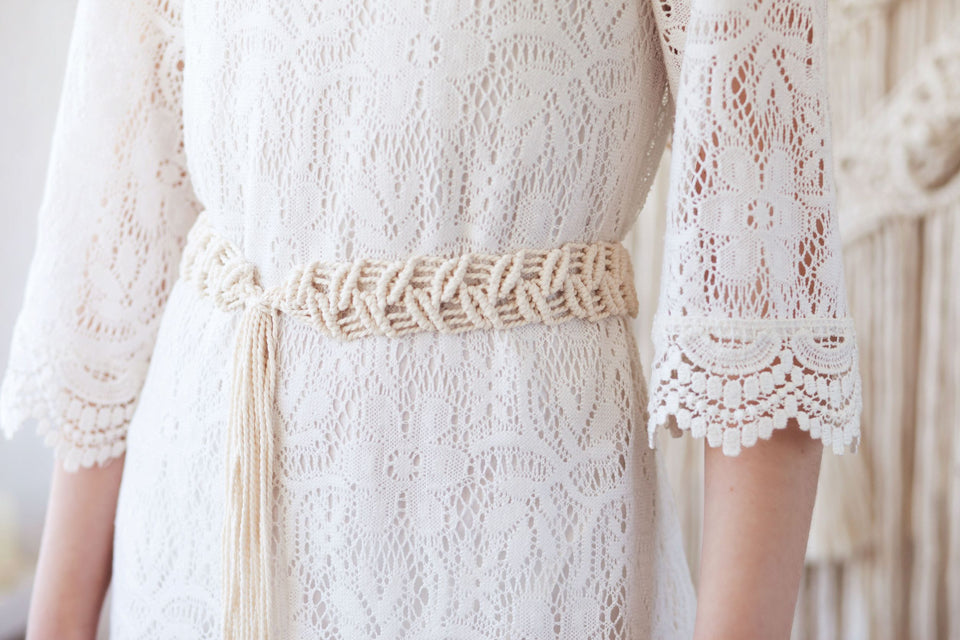
Protecting Vintage Clothing from Moths
Many vintage clothes are made from wool, cashmere, fur, and other animal-origin fabrics. Unfortunately, these fibers are ones that clothes moths are most attracted to. So, in addition to cleaning and drying your vintage clothing properly, you’ll also want to store it properly to prevent clothes moths from ruining it.
Using clothes moth traps can be an effective solution for keeping moths away from your treasured items. Moth traps are easy to use and can hang in your closet right alongside your vintage clothes. Clothing moths are attracted to the trap through special pheromones, keeping them off of your clothes.
Unlike mothballs, which are made using toxic chemicals, clothes moth traps are safe to use, even around children and pets.
Vintage Clothing - A Piece of History
Owning vintage clothing truly is like owning your own little piece of history. Each item you own comes with its own story and has lived through many decades. Learning how to clean vintage clothes properly allows you to preserve that history and keep your items looking their best so you can continue to add to their unique stories.
About MothPrevention
MothPrevention® speak to customers every day about their clothes moth issues - clothes moths are a species that are ever increasing and that can cause significant damage to clothes, carpets and other home textiles.
To date, we’ve helped over 250,000 customers deal with their moth problems. We have developed professional grade solutions including proprietary pheromones and trap design, not available from anybody else in the USA.





